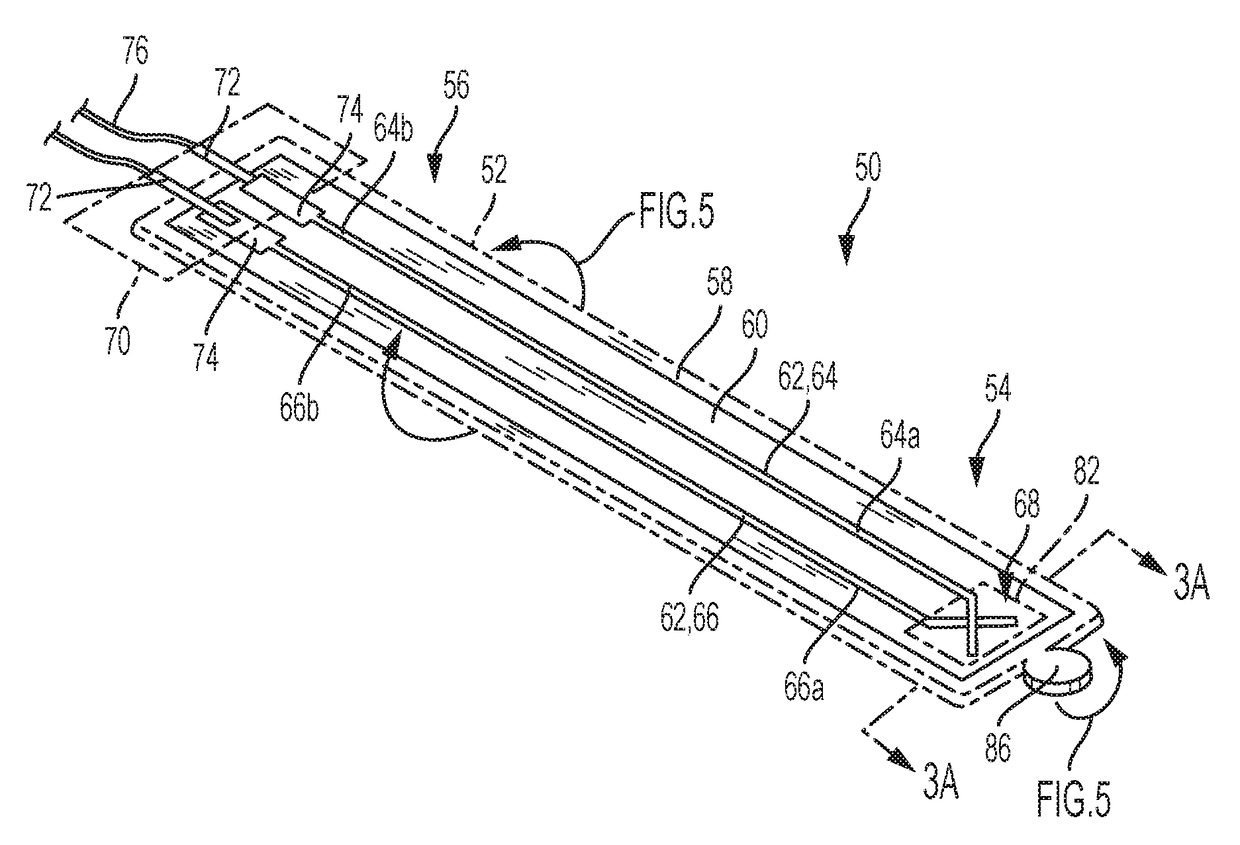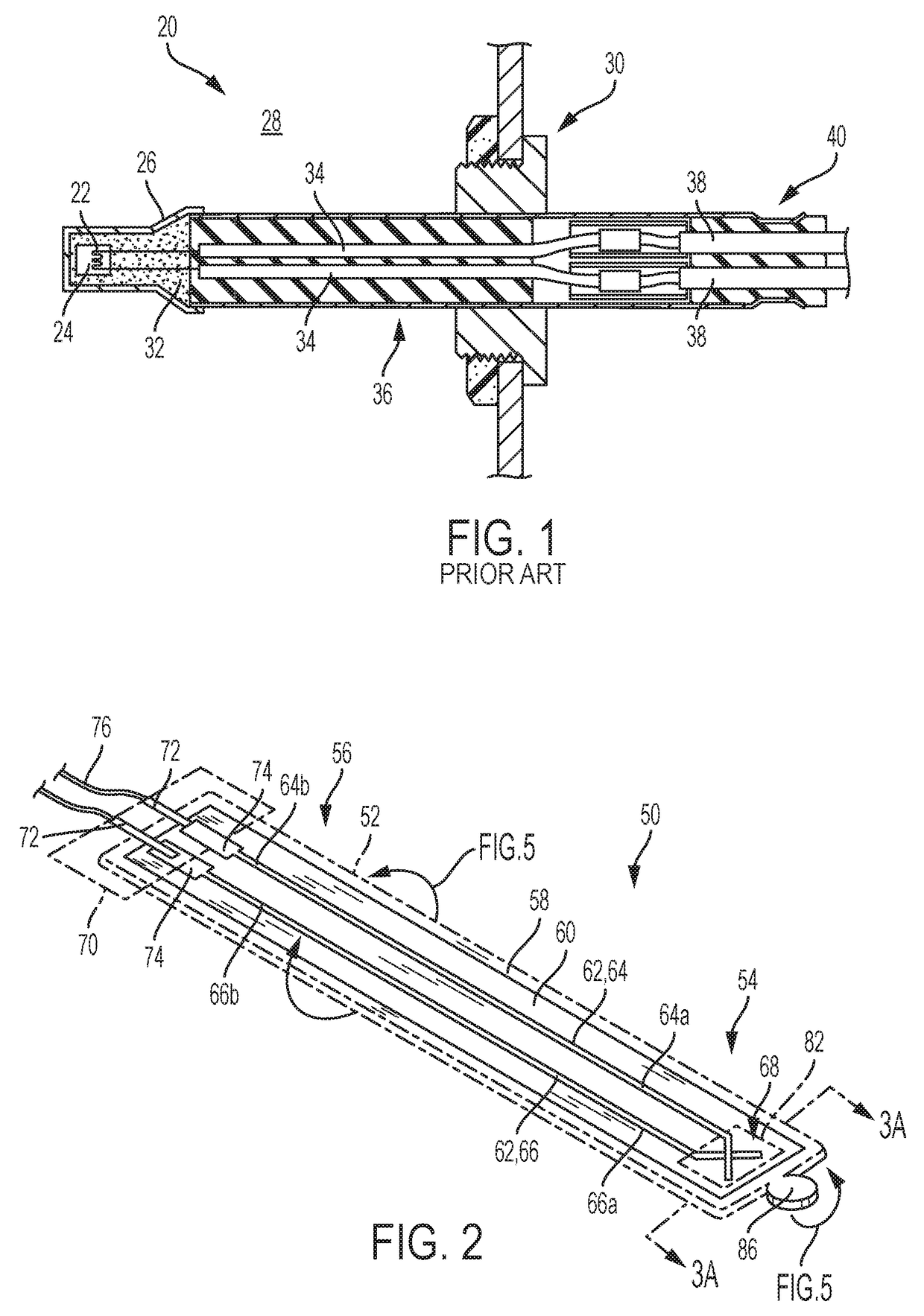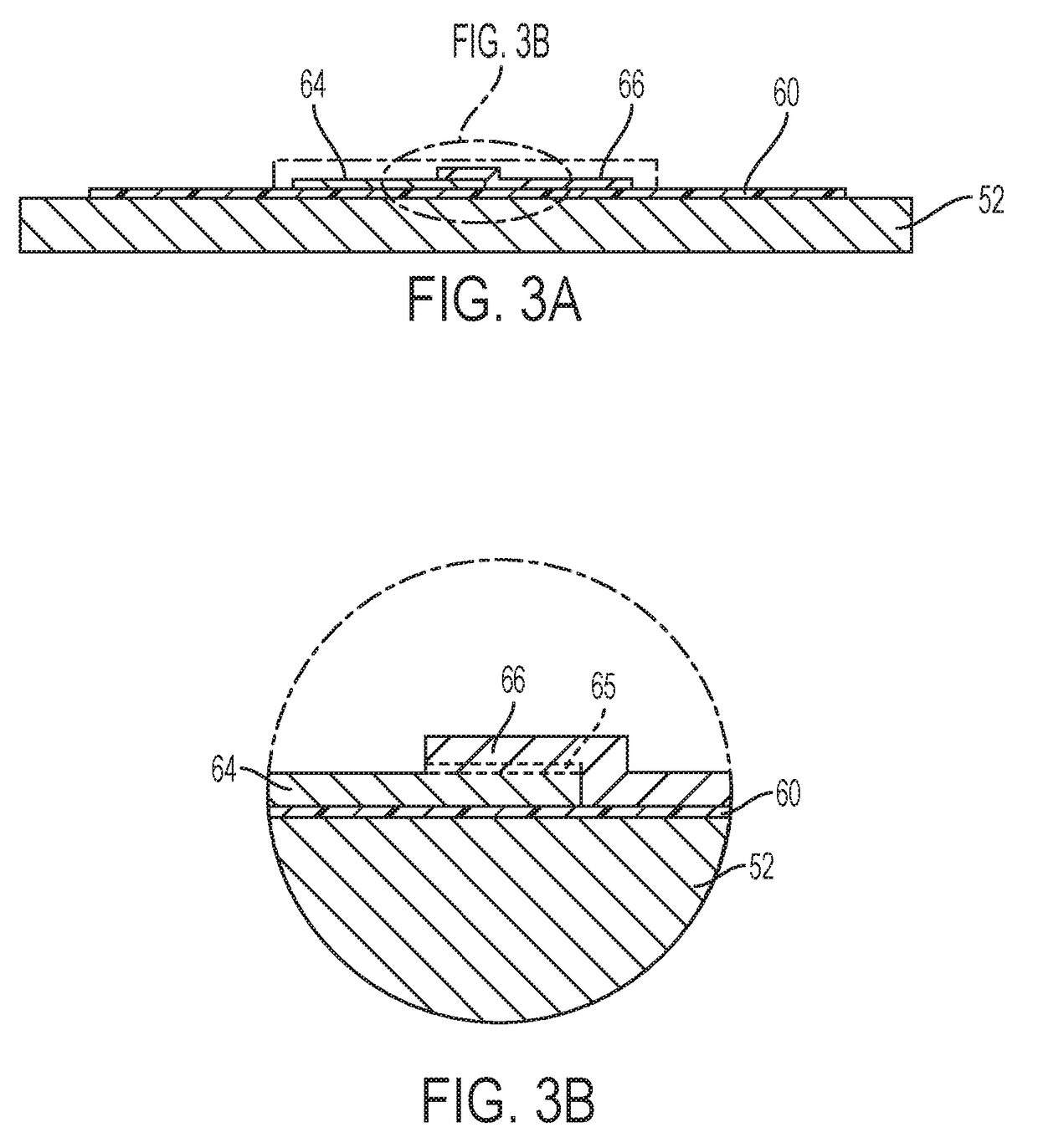Temperature sensors with integrated sensing components
a technology of temperature sensors and sensing components, applied in the field of temperature sensors, can solve the problems of prone to mechanical failure, reducing the number of electrical connections present, and reducing so as to reduce the number of electrical connections, reduce the potential operational failure point, and facilitate the manufacture
- Summary
- Abstract
- Description
- Claims
- Application Information
AI Technical Summary
Benefits of technology
Problems solved by technology
Method used
Image
Examples
Embodiment Construction
[0034]The present disclosure is described below in detail in connection with temperature sensors of the thermocouple (TC) and resistance temperature detector (RTD) type, though could also be applicable to temperature sensors of other constructions. In each embodiment, materials in layer form are deposited onto a substrate via thick film techniques such as screen printing, for example, followed by heat curing as described in detail below.
[0035]I. Thermocouple (TC) Type Temperature Sensors
[0036]Referring to FIGS. 2 and 3A, a TC type temperature sensor 50 is shown, which includes an elongate substrate 52 made of a highly temperature resistant material such as stainless steel, for example. Substrate 52 includes a distal end 54, a proximal end 56, and an exposed deposition surface 58, typically the upper surface of substrate 52, on which a temperature sensor structure is directly deposited via a thick film application method, as described further below. The boundaries of substrate 52 are...
PUM
| Property | Measurement | Unit |
|---|---|---|
| thickness | aaaaa | aaaaa |
| thickness | aaaaa | aaaaa |
| length | aaaaa | aaaaa |
Abstract
Description
Claims
Application Information
 Login to View More
Login to View More - R&D
- Intellectual Property
- Life Sciences
- Materials
- Tech Scout
- Unparalleled Data Quality
- Higher Quality Content
- 60% Fewer Hallucinations
Browse by: Latest US Patents, China's latest patents, Technical Efficacy Thesaurus, Application Domain, Technology Topic, Popular Technical Reports.
© 2025 PatSnap. All rights reserved.Legal|Privacy policy|Modern Slavery Act Transparency Statement|Sitemap|About US| Contact US: help@patsnap.com



